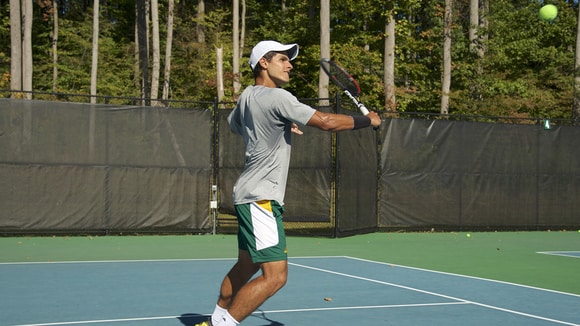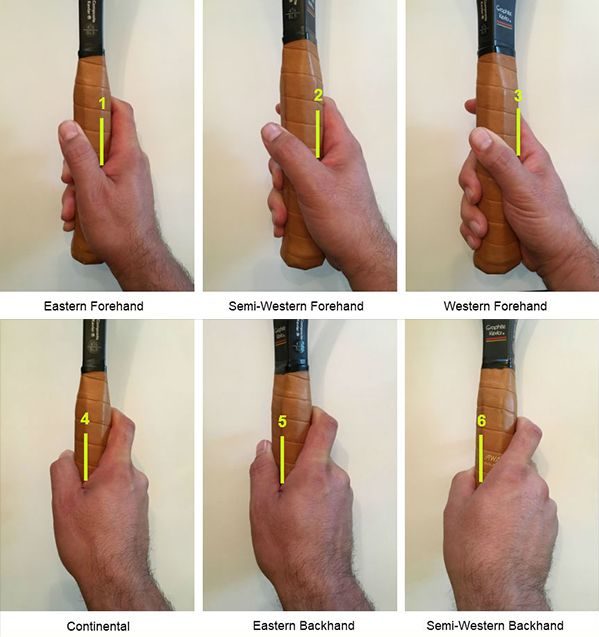Back to: PHYSICAL HEALTH EDUCATION JSS 2
Welcome to Class !!
We are eager to have you join us !!
In today’s Physical Health Education class, We will be discussing Tennis. We hope you enjoy the class!
TENNIS

Lawn tennis was introduced by Major Walter Clopton Wingfield of England in 1873. It was originally invented to be played on the lawn but other surfaces like clay, asphalt and cement were later introduced.
Organized tennis is played according to rules sanctioned by the International Tennis Federation (ITF).
Nature of the Game
The game is played in singles, doubles or mixed doubles on a rectangular court. The ball is hit with racket over the net from one side to another and playing continues until there is a fault against a player i.e. Points are awarded to a player or team whenever the opponent fails to correctly return the ball within the prescribed dimensions of the court.
The rules developed by the All England Club remain largely the same to this day. The court is rectangular, divided by a net 3.5 feet high. The game can be played one-on-one (singles) or two-on-two (doubles).
Players use racquets, generally made of a light metal strung with synthetic fibres, to hit a hollow, rubber ball covered in felt. The objective of the game is to hit the ball in such a way that the opponent cannot play a legal return. If a player is unable to return the ball, the opponent is awarded a point.
One player serves for an entire game. The first player to score four points (with at least a two-point lead) wins the game.
Tennis has a unique scoring system with the points starting at ‘love’ (zero) and progressing to ‘fifteen’, ‘thirty’ and ‘forty’. To win the set, a player must win six games with at least two more games than the opponent. And, finally, the match is determined by the best two of three sets or best three of five sets depending on where the game is played.
There are four major tennis tournaments (Grand Slams) in a year. They are:
- Australian Open
- French Open
- Wimbledon
- US Open
Skills and Techniques
Below are the fundamental tennis technical skills that every beginner player should acquire.
Additional skills are acquired as players mature and become more knowledgeable of the more advanced technical skills. Examples of these advanced skills are netplay, net charge, making contact, slice, drop shots, swing and many others. Only the fundamental tennis skills and techniques are described here.
- Grip: Forehand (Eastern) grip and Backhand (Western) grip, continental grip.
- Forehand drive.
- Backhand drive.
- The service.
- The volley.
- Lob shot.
- The smash.
- The half – volley.
- The drop shot.
- The chop.
- The Tennis Grip:
Tennis is a highly athletic game that also requires attention to basic fundamentals and techniques if one is to improve at the sport.
Many experts believe the most overlooked aspect of the sport is the grip itself, which is a bit ironic considering the hand is the only connection the player has to the racket.
There are three basic grips and then several variations of those basic holds. The three basic grips are the Continental, the Eastern, and the Western.

Adjusting the Grip
To understand the tennis grip, it is crucial to picture that a tennis grip handle has eight sides to it, therefore it is, in essence, octagonal like a stop sign. A player can adjust the grip by moving his hand or hands one ‘bevel’ or ‘notch’ either to the left or right.
The Continental grip is unique in that it can be used with all the shots, but in today’s specialized era that is rare. In this grip, the ‘V’ created by the thumb and the forefinger is pretty much atop the racket as we look down on it.
The Eastern Forehand grip is very close to the Continental and entails rotating the hand just one bevel clockwise from the Continental.
The Western Forehand is quite different than those two grips as it places the palm almost completely under the racket. The great and gregarious Jimmy Connors was known for his two-handed backhand and there many other variations of these three basic grips used by both average players and legendary champions.
Forehand and Backhand Strokes:
Of all the different types of strokes and shots you’ll learn in the game of tennis, you’ll hit more forehand and backhand strokes than anything else. Without taking the time to develop each of these critical strokes, your game really can’t even get off the ground.
Practice working on every distinction of the entire movement, from the backswing to the point of contact to the follow-through. Make forehand and backhand strokes a regular part of your practice sessions, whether you’re hitting around with a partner or using a practice wall.
You should work toward developing correct form and proper swing mechanics for each stroke from virtually any position on the court.
The Serve:
The serve is absolutely critical because it’s the only point that you can fully initiate and control.
There are several small movements that work together to form a tennis serve, so you’ll need to focus on perfecting each of these movements until you’re able to do them instinctively.
Work on mastering the ball toss, developing a consistent point of contact, and properly timing each movement. Once you’ve put them all together, you can then work on sharpening the finer points of your technique.
The Volley:
A tennis volley is a shot where the ball is hit before it bounces on the ground except for the overhead shot and the serve. If a player hits the ball just after it touches the ground it is a half volley.
In most cases, a tennis volley is hit when you are playing net. However, it can also be done even if you are in the middle or even on the baseline depending on the circumstances.
The continental grip is commonly used for volleys because it allows for a more-firm grip to meet the ball in the air.
A volley is considered as part of the overall tennis skills and techniques that can be applied when you are off-balance or out-of-position to hit a groundstroke.
However, it is normally played as an offensive shot near the net, where you hit a winner angled or a well-placed volley shot.
Tennis Lob:
A tennis lob shot is an important additional asset to add to a player’s tennis skills and techniques. It is a shot that can be used as an offensive or defensive shot.
A lob shot is executed by hitting the ball high and deep into your opponent’s court.
Normally, an offensive lob shot is hit when the opponent is at the net while a defensive lob shot is used to force the opponent back and allow you to recover to a better defensive position. As a result, you can gain back control of the play and make it to your advantage.
Groundstrokes:
Once play has begun, we witness the players hitting balls using various techniques including groundstrokes and volleys. Groundstrokes are usually hit with a full swing near the back edge of the court and can be hit on either side of the body as forehand shots and one or two-handed backhand shots.
Forehand and one-handed backhand groundstroke are commonly hit using an Eastern or Western grip, while a continental works well as the bottom of the two hands on a two-handed backhand.
From the baseline, a player can also use the lob, which is a soft, high shot that the opponent may have to run after as it drops behind them.
The Drop shot:
A drop shot is kind of a ‘trick shot’ that is barely hit over the net so that the opponent must rush forward to try to reach it, sort of the opposite of the aforementioned lob.
The Smash:
A smash is an overhead shot hit with force sort of like a serve but during the action.
We have come to the end of this class. We do hope you enjoyed the class?
Should you have any further question, feel free to ask in the comment section below and trust us to respond as soon as possible.
In our next class, we will be talking about Tennis Rules & Regulations. We are very much eager to meet you there.
